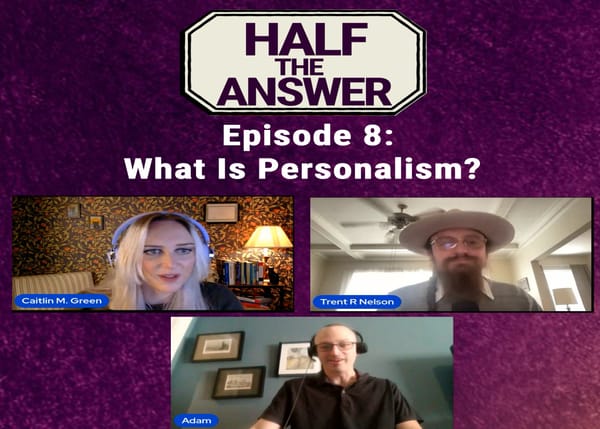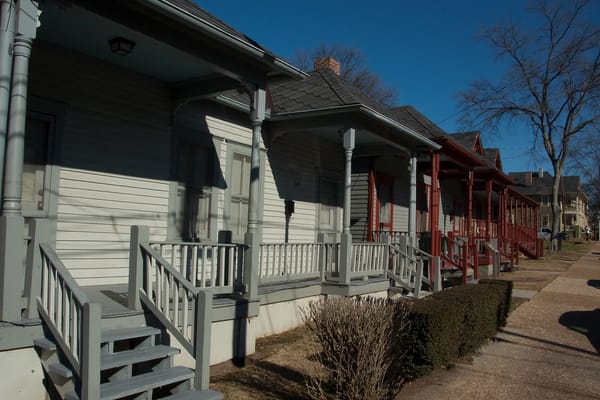Thinking the New Protest Culture: Arendt

Arendt’s wisdom provides a unique of understanding the spectre haunting the American university – the spectre of protest. Across the country, universities have erupted in largely non-violent, very public protests. Aligning themselves with groups such as Black Lives Matter and Occupy Wall Street, the new American protest culture is intimately concerned with promoting social justice and diversity and opposing institutional racism, sexism, and homophobia. One such example subsists in the University of Missouri football team’s refusal to play in response to a much-publicized racial incident on campus, which resulted in the resignation of the University’s President.[1] New campus activism, additionally, involves the creation of “safe spaces,” sub-units of universities where students who belong to or identify with marginalized groups are able to “relax and be fully self-expressed, without fear of being made to feel uncomfortable, unwelcome, or unsafe on account of biological sex, race/ethnicity, sexual orientation, gender identity or expression, cultural background, age, or physical or mental ability.”[2] Additionally, some instructors have opted to add “trigger warnings” to syllabuses and certain public posts in order to “tag content that depicted or discussed common causes of trauma like military combat, child abuse, incest, and sexual violence.”[3]
All of these concerns emanate from what conservative columnist David Brooks calls “shame culture.” Brooks writes, “The ultimate sin today, Crouch argues, is to criticize a group, especially on moral grounds. Talk of bad and good has to defer talk about respect and recognition.” Further, “in the new shame culture, the opposite of shame is celebrity – to be attention-grabbing and aggressively unique on some media platform.” Yet, the essential feature here is that in shame culture, “social exclusion makes people feel they are bad,” as opposed to people who do “bad things.”[4] Brooks’ concerns are further echoed in Greg Lukianoff and Jonathan Haidt’s Atlantic Monthly piece, “The Coddling of the American Mind.” In this piece, Lukianoff and Haidt argue, “Trigger warnings are sometimes demanded for a long list of ideas and attitudes that some students find politically offensive in the name of preventing other student’s from being harmed” and that safe spaces represent places where “young adults are shielded from words and ideas that make some uncomfortable.” This results in a “culture in which everyone must think twice before speaking up, lest they face charges of insensitivity, aggression, or worse.”[5]
Both pieces refer to Allan Bloom’s The Closing of the American Mind. In this work, Bloom harshly criticizes the American university for lowering academic standards, ignoring central facets of liberal education, and enforcing political correctness out of a misplaced sense of egalitarianism. Of particular import here is Bloom’s insistence that students are “awash in moral relativism.”[6] For instance, “The social sciences have dealt with Nazism as a psychopathology, a result of authoritarian or other-directed personalities, a case for psychiatrists, as presented by Woody Allen.”[7] Bloom provides an example from his teaching experiences. “I asked…Who do you think is evil? To this one there is an immediate response: Hitler….And there it stops. They have no idea of evil; they doubt its existence. Hitler is just another abstraction, an item to fill up an empty category. Although they live in a world in which the most brutal crime in the streets, they turn aside. Perhaps they believe that evil deeds are performed by persons who, if they got the proper therapy, would not do them again…”[8]
Brooks’ response to Bloom is unexpected. First, Brooks argues that, “Bloom’s thesis was right at the time, but it’s not accurate anymore. College campuses are today awash in moral judgment.” Further, Brooks claims that the campus activism “might rebind the social and communal fabric. It might reverse, a bit, the individualistic, atomistic thrust of the past 50 years.[9] Brooks is not altogether wrong, and from an Arendtian standpoint, the new campus activism represents an incomplete version of Arenditan civil disobedience.
For instance, Arendt emphasizes the import of community in her writings on civil disobedience. Quoting Tocqueville, Arendt argues that, “Consent and the right to dissent became the inspiring and organizing principles of action that taught the inhabitants of this continent the ‘art of associating together.’”[10] Further, this notion of civil disobedience carries with it the notion that the “First Amendment neither in language nor in spirit conveys the right of association as it is actually practiced in this country – this precious privilege whose exercise has in fact been (as Tocqueville noted) ‘incorporated with the manners and customs of the people’ for centuries.”[11] As a result, the Arendtian perspective would applaud the concept behind the creation of safe spaces as a means whereby students who otherwise feel marginalized may be incorporated into the wider community. The goal of the new protest culture, however, could not be any more different from that of the New Left. Rather than a desire to overthrow institutions considered oppressive, new protest culture demands greater access to institutions, even if said institutions are oppressive, with the hope of reforming them.
Such a desire to join with communities is laudable. However, the Bloomian criticism is still very much valid from an Arendtian standpoint. While the ends pursued by new protest culture are remarkable, the means “double-down,” as it were, on some of the worst aspects of the modern university as explicated by Bloom. The desire to build safe spaces, in addition to wanting to join the community, is informed by notions of trauma. However, the use of the rhetoric of trauma here legitimizes the presence of a veritable army of counselors, administrators, professionals and other ‘problem-solvers’ – bureaucrats – whose job is to apply social scientific stratagem to contemporary social ills. What emerge are institutions whereby the appearance of healing has begun, but these institutions are fundamentally empty. The goal of administration in this sense, according to Arendt is to pursue “the cause of image-making and winning people’s minds.”[12]
Thus, from an Arendtian standpoint, new protest culture is a half-finished project. While the diagnosis is correct and its goals admirable, new protest culture’s unabated trust in institutional solutions is misplaced, ignoring Arendt’s pleas to build institutions without bureaucratization. To Arendt, bureaucracies are indeed violent but not visibly so, making the power necessary to resist them that much more difficult.[13]
Arendt’s writings on democracy and political activism do not represent some awkward middle period in Arendt’s oeuvre. Crises of the Republic represents an experimental type of thinking on Arendt’s part. The essays therein are timely, but not of their time. They are theoretical but not overly abstract. They are focused on particularities, but not pedantic. Of particular import, Arendt’s thoughts on the nature of judgment are presented here in nascent form. In a university climate so intimately concerned with questions of civil disobedience, Arendt’s heterodoxy regarding questions of civil disobedience and the role of judgment in these questions are infinitely valuable.
Here, an Arendtian perspective on civil disobedience is of much great practical import. While an Arendtian analysis cannot say what students ought to do, it can provide insight regarding how one ought to do it or, importantly, what one ought not do. This is well in keeping with Arendt’s affinity for Socratic politics. Socrates’ daimon does not tell him what to do, but what not to do. For Arendt, this Socratic invocation of “divine sign” as David Corey calls it[14] comes from an unpolitical source – the conscience.[15] Yet, even if the conscience is unpolitical, it is only sharpened and developed if one lives in a political community. To this end, Arendt reminds us, “As we use the word [conscience] today, in both moral and legal matters, conscience is always supposed to be present within us, as though it were identical with consciousness. (It is true that it took language a long time to distinguish between the two.)”[16]
The purpose of politics in Arendt’s later work concerns, to a large degree, the question of where one’s attention is laid. Arendt responds in prophetic fashion: she does not explicate, only points. She does not present answers, but formulates how we may arrive at our own conclusions. This is, to some degree, to be expected. To Arendt, the questions of political struggle involve timeless concepts expressed in particular historical settings that can only be mediated through self-reflection guided by aesthetic judgment. The goal is to find the right images to “tend one’s own garden,” as it were, when it comes to questions of political exigencies. Only then may one approach the other in a position of ethical openness in a space that encourages a common life, where speaking and acting and thinking together is valued.
[1] Boren, Cindy. 2015. “Why Missouri Football Players Are Going on Strike; University President Won’t Quit.” The Washington Post. https://www.washingtonpost.com/news/early-lead/wp/2015/11/08/why-missouri-football-players-are-going-on-strike/ (May 5, 2016).
[2] Advocates for Youth. “Glossary.” http://www.advocatesforyouth.org/publications/607-glossary (May 4, 2016).
[3] Manne, Kate. 2015. “Why I Use Trigger Warnings.” The New York Times. http://www.nytimes.com/2015/09/20/opinion/sunday/why-i-use-trigger-warnings.html (May 4, 2016).
[4] Brooks, David. 2016. “The Shame Culture.” The New York Times. http://www.nytimes.com/2016/03/15/opinion/the-shame-culture.html?_r=0 (May 4, 2016).
[5] Lukianoff, Greg, and Jonathan Haidt. 2015. “The Coddling of the American Mind.” The Atlantic Monthly. http://www.theatlantic.com/magazine/archive/2015/09/the-coddling-of-the-american-mind/399356/ (May 4, 2016).
[6] Brooks, David. 2016. “The Shame Culture.”
[7] Bloom, Allan. 1987. The Closing of the American Mind. New York: Simon & Schuster. p. 154
[8] Ibid p. 67
[9] Brooks, David. 2016. “The Shame Culture.”
[10] Arendt, Hannah. 1972. Crises of the Republic. p. 94
[11] Ibid p. 101
[12] Ibid p. 28
[13] Ibid p. 140
[14] Corey, David. 2005. “Socratic Citizenship: Delphic Oracle and Divine Sign.” The Review of Politics 67(2): 201–28. p. 219
[15] Arendt, Hannah. 1972. Crises of the Republic. p. 60
[16] Ibid p. 65
Featured Image is University of Minnesota students protest against hate speech, by Fibonacci Blue




